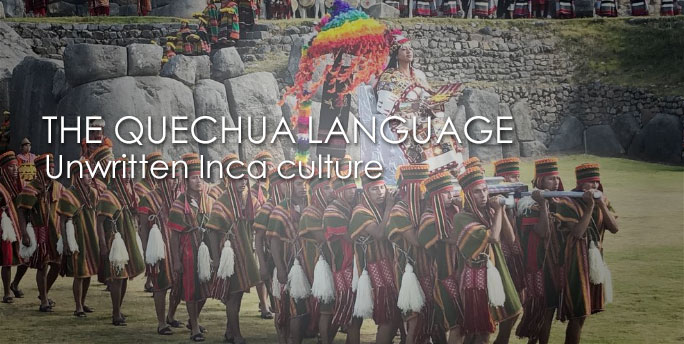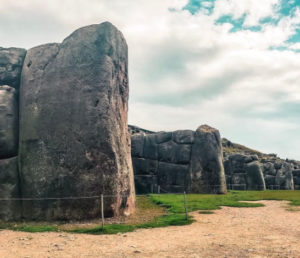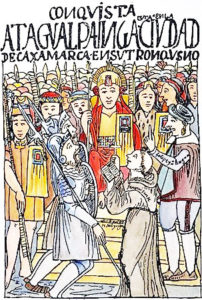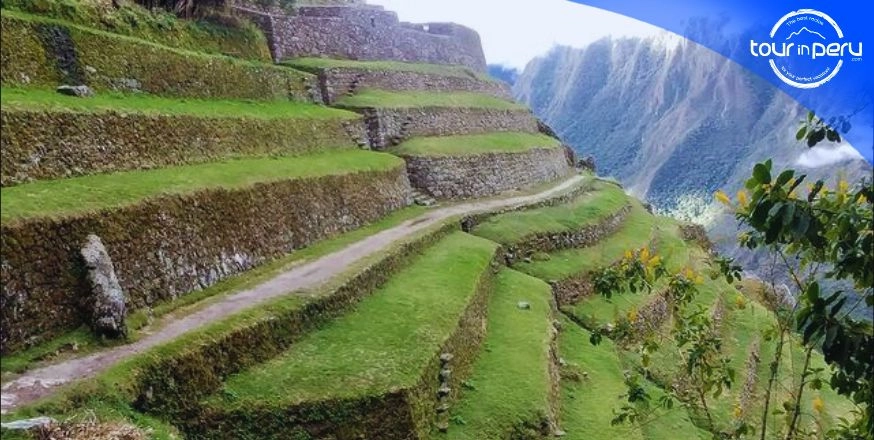Table of Contents
Quechua was the official language of the Inca empire, until the Spanish invasion that started in 1532; it was the language spoken by all royalty in Cusco city, which was the capital of the empire, that at the time of its fall had reached today’s Colombia, Chile and Argentina. Let’s share with our readers one more fascinating topic of Inca history.
Quechua: the Inca Imperial Phonetic Language
Today, in Peru and Cusco city the prevailing language is Spanish, but Quechua remains in usage by millions, and in the Cusco region it is really widespread; moreover, it is still the first language in most rural areas. All professional and technological careers here require ample knowledge of Quechua, particularly anthropology, social work and medical areas.
A key subject to be addressed about Inca language is that they didn’t develop any written structure, which had as a consequence the improvement of oral language; they also created a system of communication based on strictly codified knots over a variety of ropes, known as quipus. The quipus were mainly used by the government, to control the economy and demography mainly, they were not only linguistic but also mathematical; the officials oftentimes sent quipus from all over the empire to their respective administrative headquarters with running messengers called chaskis, for whom there were resting posts called tambos along all Inca roads, a vast system called Qapac Ñan.
This didn’t impede though that the Inca language developed into a full operational one, which was spoken all over the empire or Tahuantinsuyu, meaning “the four directions”, which were the four political and territorial divisions of the empire, or suyus.
Inca means both the empire and the emperor; the main wife of the Inca was the Coya, and the prince heir was the Auqui.
Visitors will find Inca language words that denominate all their places and archaeological remains: the main religious temple of the empire, located in Cusco city, is the Koricancha (house of the gold); the mighty fortress overlooking Cusco city is Sacsayhuaman (satisfied falcon), the entrance to Machu Picchu is Inti Punku (Sun Gate) and Machu Picchu itself means “old mountain”.
As for the variations of Quechua writing today – Cusco, Qosqo, and so on- they are of current usage, since Quechua allows for such because they are phonetically equivalent, that is, phonetic criteria prevail given that they had no writing. For example:
Coricancha – Qoricancha – Qoriqancha – Qorikancha – Korikancha – Koriqancha
Thus, in Inca language, one word can be written in many ways.
The Incas didn’t produce written literature of course, but at the time of the Spanish invasion, Spaniard writers put on paper the oral and quipu traditions that native people taught them; the only literary work we have from Inca times is the drama called Ollantay, about a general who falls in love with one of the Inca’s daughters, a princess, but strict social division doesn’t allow them to openly become a couple. This drama shows that, although they were a compassionate elite who provided enough for the population, nca royalty never allowed common people to have political, intellectual and social equality.
The Arrival of Spanish Language with the Conquerors – Quechua Decline
The Spanish conquering of the Tawantinsuyu brought of course their language, which is the product of a completely different evolution, mainly derivative from Latin, which was the language of the Roman empire who ruled over today’s Spain, called Hispania back then. In time, Quechua phonetic Inca language begun to be converted into writing, so it is that today we can pen it down; for instance, the drama Ollantay is not only played in Peruvian schools, but also can be found on book version.
The most famous anecdote about the Incas approach to language and communication happened when the capture of Inca Atahualpa, before the battle of Cajamarca (north of Peru) in 1532. The two armies met and were standing in front of each other; Spanish conqueror Francisco Pizarro had brought with him a number of Catholic priests, in order to teach the religion to this part of the new world. One of the priests walked to Inca Atahualpa and stood next to him, with the intent of asking for a peaceful surrender and avoid bloodshed, hands Atahualpa a Bible; the Inca looked at the book, opened it, but Spanish witnesses who later wrote the famous Chronicles, state that the Inca expected the book to make some noise, to communicate in a phonetic way, so he puts the Bible against his ear, and given that he heard nothing, he deemed the object as useless and threw it on the ground.
The priest then shouted a famous phrase, which became historic: “The Gospels to the ground!” which finally cued the Spanish army to ferociously attack, since they already knew for a fact of the immense reserves of gold and silver that were all over the empire. That day Inca Atahualpa was arrested and taken to prison, where it is said he was taught chess and became quite a competent player.
We surely hope this article on Inca language is useful in some fashion to illustrate the reader about the rich history of the Peruvian Andes, a plus to its wonderful natural and archaeological beauty and its healthy, energizing, relaxing environment.
Travel in Great Style to the Inca Sites with TOUR IN PERU
TOUR IN PERU offers daily packages for Machu Picchu, Cusco city and the Cusco region, the Peruvian western jungle and all top destinations in the country. Our professional guides for the Cusco region are native-born and Quechua-speaking, so they are fully qualified to provide our travelers all the information about the amazing Inca culture and Peruvian history.
All vacation packages can be completely personalized for our travelers’ best convenience, be it accommodations, itinerary, schedule and so on; also, TOUR IN PERU offers our clients the best way to have a Peru experience, which are the private tours and private services, real top traveling attention with prices still quite affordable.
Check our website www.tourinperu.com for complete information about great travel packages and contact our tour experts for booking your unettable Peru vacation!











